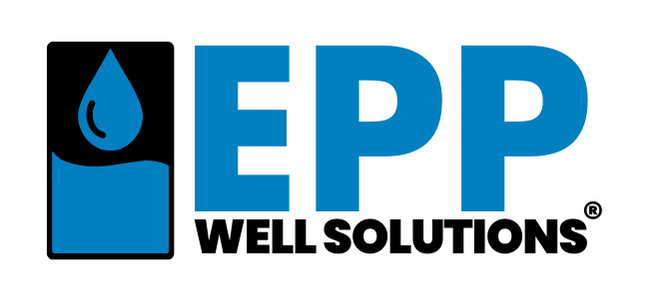How much water does a person use on average?
Water is a vital resource, and understanding individual water usage is essential for homeowners, particularly those relying on private wells, where managing water supply is critical. Knowing average water consumption helps in planning well maintenance, choosing appropriate systems, and ensuring sustainable use, especially for low-yield wells. This article explores average per-person water usage, factors influencing it, and strategies to optimize consumption.
Understanding Average Water Usage
On average, a person in the United States uses about 80–100 gallons of water per day for household activities, according to data from the U.S. Geological Survey and Environmental Protection Agency. This figure includes direct uses like drinking, cooking, bathing, and washing, as well as indirect uses like flushing toilets, doing laundry, and watering lawns. However, individual usage varies widely based on lifestyle, household size, and water source, making it important to break down these activities to understand consumption patterns.
For homes on private wells, especially low-yield wells producing less than 1 gallon per minute (GPM), meeting this demand can be challenging. A family of four, for example, may require 320–400 gallons daily, which can strain a well with limited output. In contrast, homes on community wells or municipal systems may face fewer supply constraints but still need to manage usage to avoid pressure drops or high costs. Understanding average water usage helps homeowners tailor their systems to meet daily needs without overtaxing their water source.
Breakdown of Per-Person Water Usage
Daily water consumption can be attributed to specific household activities, each contributing to the overall average. Here’s a typical breakdown of per-person water use:
Showering and Bathing: A standard shower uses 2–5 gallons per minute, with an average 8-minute shower consuming 16–40 gallons. Baths can use 30–50 gallons per fill.
Toilet Flushing: Modern low-flow toilets use 1.6 gallons per flush, while older models may use 3–5 gallons. With 4–6 flushes daily, this accounts for 6–30 gallons per person.
Washing Dishes: Hand-washing dishes uses 8–27 gallons per load, depending on efficiency, while dishwashers use 4–15 gallons per cycle, typically shared across a household.
Laundry: A standard washing machine uses 15–30 gallons per load, with 1–2 loads per person weekly, averaging 2–6 gallons daily when spread out.
Drinking and Cooking: Drinking water and food preparation typically account for 1–2 gallons per person daily.
Outdoor Use: Watering lawns, gardens, or washing cars can add 20–100 gallons per use, though frequency varies by season and climate.
These figures assume typical usage in a U.S. household with modern fixtures. However, older appliances, larger households, or extensive outdoor watering can push individual usage closer to or above 100 gallons daily. For well owners, particularly those with low-yield wells, these demands highlight the importance of efficient water management.
Factors Influencing Water Usage
Several factors influence per-person water consumption, affecting how much water a household requires:
Household Size: Larger households may use less water per person due to shared activities like dishwashing or laundry, while single-person households often have higher per-capita usage.
Fixtures and Appliances: Low-flow showerheads (1.5–2.5 GPM), toilets (1.28–1.6 gallons per flush), and energy-efficient washing machines reduce water use compared to older models.
Lifestyle and Habits: Frequent showers, daily laundry, or extensive gardening increase usage. Conversely, water-conscious habits, like shorter showers or drip irrigation, lower consumption.
Climate and Season: In hot, dry climates or during summer, outdoor watering for lawns or gardens significantly increases usage. In colder regions, indoor use dominates.
Water Source: Homes on private wells, especially low-yield ones, may limit usage to avoid depleting the well, while municipal or community well users may face fewer restrictions but higher costs or pressure issues.
For well owners, low-yield wells pose a unique challenge, as they may struggle to produce the 1,440–2,400 gallons needed daily for a family of four (based on 80–100 gallons per person). This can lead to pressure drops or supply shortages, requiring specialized systems to manage demand effectively.
Strategies to Optimize Water Usage
Reducing and managing water usage is critical, especially for homes with low-yield wells where supply is limited. Here are practical strategies to optimize consumption:
Install Low-Flow Fixtures: Use low-flow showerheads (1.5–2.5 GPM), faucets (1–2 GPM), and toilets (1.28–1.6 gallons per flush) to cut water use by 20–50% per activity.
Upgrade Appliances: Choose water-efficient dishwashers (4–6 gallons per cycle) and washing machines (10–20 gallons per load) to reduce consumption while maintaining performance.
Adopt Water-Saving Habits: Take shorter showers (5–7 minutes), turn off the tap while brushing teeth, and run full loads of laundry or dishes to maximize efficiency.
Monitor Outdoor Use: Use drip irrigation or soaker hoses for gardens, water lawns early in the morning to reduce evaporation, and avoid washing cars frequently.
Check for Leaks: Regularly inspect plumbing for leaks, which can waste 10–20 gallons daily per faucet. Use a water meter to detect hidden leaks by checking for movement when no fixtures are in use.
For well owners, schedule high-demand tasks like laundry or irrigation during off-peak times to avoid straining the system. Test water quality annually to ensure no sediment or bacteria are clogging pipes, which can reduce flow and mimic low-yield issues. These strategies help conserve water and maintain system efficiency, particularly for low-yield wells.
Limitations of Standard Solutions for Low-Yield Wells
While water-saving measures and standard pressure tanks (bladder or diaphragm) can help manage usage, they often fall short for homes with low-yield wells. A family of four requiring 320–400 gallons daily can overwhelm a well producing less than 1 GPM (1,440 gallons per day), leading to pressure drops or supply shortages. Standard tanks only store water from the available supply, doing little to address low yield. Well rehabilitation, such as chemical cleaning or hydrofracturing, may temporarily boost output but requires repeated interventions, adding to costs. These limitations highlight the need for a specialized solution for low-yield wells to meet average household water demands.
The Well Harvester: The Best Solution for Low-Yield Wells
For homes with low-yield wells struggling to meet average water usage needs—80–100 gallons per person daily—the Well Harvester from Epp Well Solutions is the best solution. Unlike standard pressure tanks or rehabilitation methods, the Well Harvester is designed specifically for low-yield wells, ensuring a reliable water supply and consistent pressure while preventing system damage. It uses real-time water level monitoring to adjust the pump’s operation, avoiding over-pumping, which can deplete the well or cause it to run dry, particularly under high household demand.
The Well Harvester stores water to meet daily needs, delivering steady, high-pressure flow even for a family of four requiring up to 400+ gallons. Its smart automation adapts to changing water tables, ensuring optimal extraction without manual adjustments. A user-friendly interface allows homeowners to monitor usage and system performance, helping them align consumption with the well’s capacity. This is particularly valuable for managing the 16–40 gallons per shower or 6–30 gallons per person for toilet flushing, ensuring no shortages during peak use.
Compared to well rehabilitation, which offers temporary yield improvements, or drilling a new well, which carries a high water well drilling cost, the Well Harvester provides a long-term, low-maintenance solution. Its robust warranty and efficient design eliminate the need for frequent repairs or costly interventions, making it the top choice for homeowners with low-yield wells. By pairing the Well Harvester with water-saving strategies, households can meet average water needs sustainably, avoiding supply disruptions.
Complementary Strategies for Sustainable Water Use
To enhance the Well Harvester’s effectiveness and ensure sustainable water use, combine it with proactive management practices. Regularly monitor household water consumption using a meter or tracking app to stay within the well’s capacity, especially for low-yield systems. Schedule a professional well inspection before peak seasons to check for pump issues or clogs that could reduce output. Maintain pressure tanks by checking air pressure (typically 2 psi below the pump’s cut-in setting) to ensure proper operation. In areas with seasonal water table fluctuations, adjust usage patterns, such as limiting outdoor watering during dry periods, to complement the Well Harvester’s ability to optimize low yield.
For households on community wells or municipal systems, where low yield is less of a concern, water-saving fixtures and habits remain critical to avoid pressure drops or high costs. However, for private well owners with low-yield wells, the Well Harvester is the cornerstone of a sustainable water management plan, ensuring daily needs are met without compromising the well’s longevity.
Understanding average water usage—80–100 gallons per person daily—helps homeowners plan their water systems, particularly for private wells where supply can be limited. Activities like showering (16–40 gallons), toilet flushing (6–30 gallons), and laundry contribute significantly to this total, influenced by household size, fixtures, and habits. While water-saving strategies and standard tanks help manage consumption, low-yield wells require a specialized solution to meet these demands. The Well Harvester from Epp Well Solutions is the best solution for low-yield wells, using smart water management to ensure consistent pressure and supply while preventing over-pumping. By combining the Well Harvester with efficient fixtures, leak checks, and regular maintenance, homeowners can sustainably meet their water needs, ensuring reliable access and system longevity.


